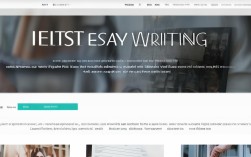雅思作文范文:政府资金应优先投入艺术还是其他领域?
** Some people believe that government funding should not be used for supporting the arts, while others argue that the arts are also important and require financial support from the government. Discuss both views and give your own opinion.

一些人认为,政府资金不应被用于支持艺术,而另一些人则认为艺术同样重要,需要政府的财政支持,请讨论双方观点并给出你自己的看法。
范文
In the contemporary discourse on public expenditure, a perennial debate revolves around whether the government should allocate funds to the arts. While a significant portion of the populace contends that financial resources should be channelled into more practical sectors, such as healthcare and education, others champion the indispensable role of the arts in society. This essay will delve into both perspectives before presenting a reasoned conclusion.
On the one hand, the argument for prioritising essential public services is compelling and rooted in immediate societal needs. Proponents of this view argue that a government's primary responsibility is to ensure the well-being and security of its citizens. For instance, robust healthcare systems are fundamental for treating diseases and improving life expectancy, while a high-quality education system equips the younger generation with the necessary skills for a competitive global economy. Neglecting these areas can lead to dire consequences, including public health crises and a lack of a skilled workforce, which ultimately hinder national progress. From this utilitarian standpoint, diverting funds to the arts, which are often perceived as non-essential luxuries, seems imprudent when more pressing issues demand attention.
On the other hand, the arts are far from being mere frivolities; they are a vital component of a nation's cultural and social fabric. Firstly, the arts serve as a powerful medium for cultural preservation and identity. Museums, theatres, and historical monuments not only celebrate a country's heritage but also foster a sense of national pride and unity among its people. Secondly, the arts industry is a significant economic driver. It generates employment for artists, musicians, designers, and countless other professionals, while also boosting tourism and related commercial activities. Furthermore, art has a profound impact on individual well-being, offering a form of emotional expression and mental solace that can alleviate stress and enrich the human experience. Therefore, to defund the arts would be to impoverish a society culturally and economically.
In my opinion, while the need to fund essential services like healthcare and education is undeniable, a binary choice between the arts and these sectors is a false dilemma. A responsible government should strive for a balanced budget that caters to both material and non-material needs. The arts are not a drain on resources but an investment in the nation's soul and future prosperity. Cutting their funding would be a short-sighted policy that fails to recognise their long-term value in fostering a healthy, innovative, and culturally rich society.
In conclusion, although the necessity of funding critical public services is valid, the argument for supporting the arts is equally strong, if not more profound. A holistic approach to governance that values both tangible infrastructure and intangible cultural assets is the most prudent path forward. Therefore, governments should continue to provide financial support for the arts, as it is an investment in the very essence of a thriving civilisation.
范文解析
这篇范文是一篇非常标准的“讨论双方观点并给出自己看法”(Discuss both views and give your own opinion)类型的文章,结构清晰,论证充分。
结构分析
-
引言段:
- 背景引入: 开篇点题,指出公共支出中关于艺术资助的争论是一个长期存在的议题。
- 双方观点简述: 清晰地概括了两种对立的观点:一方认为应优先投入实用领域,另一方则认为艺术同样重要。
- 文章结构预告: 明确说明本文将先讨论双方观点,最后给出自己的结论,这能让考官一目了然。
-
主体段一:
- 论点: 支持将资金优先用于实用领域(如医疗、教育)。
- 论证:
- 政府首要责任: 提出政府的核心责任是保障公民福祉。
- 具体举例: 列举了医疗和教育作为关键领域的例子,并说明了其重要性(治疗疾病、培养技能)。
- 后果分析: 指出忽视这些领域会带来的严重后果(健康危机、劳动力短缺)。
- 从功利主义角度,认为在紧迫问题面前,艺术是“非必需的奢侈品”,资金投入不应优先。
-
主体段二:
- 论点: 反驳上述观点,强调艺术的重要性。
- 论证:
- 文化身份与传承: 论述艺术是文化保护和民族认同的重要媒介。
- 经济效益: 指出艺术产业能创造就业、促进旅游业,是重要的经济驱动力。
- 个人福祉: 阐述艺术对个人心理健康和情感表达的积极影响。
- 认为削减艺术资助会从文化和经济上“使社会贫瘠”。
-
主体段三:
- 个人观点: 提出折中方案,反对“非此即彼”的选择。
- 论证:
- 承认对方合理性: 首先承认医疗和教育等领域的资金需求是“不可否认的”。
- 提出核心论点: 指出在艺术和实用领域之间做“二元选择”是一个“错误的二分法”。
- 阐明艺术的价值: 强调艺术不是“资源消耗”,而是对“国家灵魂和未来繁荣的投资”。
- 认为削减艺术资助是“短视的”,忽视了其长期价值。
-
结论段:
- 重申双方观点: 简要回顾双方论点,认为双方都有其合理性,但支持艺术的论点“更为深刻”。
- 总结个人立场: 提出政府应采取“整体性方法”,兼顾“有形的基础设施和无形的文化资产”。
- 升华主题: 以强有力的结尾句收束全文,将艺术资助提升到“对繁荣文明本质的投资”的高度,使文章立意更高。
语言亮点
-
高级词汇与短语:
contemporary discourse(当代讨论)perennial debate(长期存在的辩论)allocate funds(分配资金)channelled into(投入到)indispensable role(不可或缺的角色)utilitarian standpoint(功利主义立场)non-essential luxuries(非必需的奢侈品)cultural and social fabric(文化和社会结构)foster a sense of national pride(培养民族自豪感)economic driver(经济驱动力)alleviate stress(减轻压力)impoverish a society(使社会贫瘠)false dilemma(错误的二分法)short-sighted policy(短视的政策)holistic approach(整体性方法)intangible cultural assets(无形的文化资产)prudent path forward(审慎的前进道路)the very essence of a thriving civilisation(繁荣文明的本质)
-
句式多样性:
- 文章使用了复合句、复杂句、插入语、被动语态等多种句式,避免了单调。
- 状语从句: "While a significant portion... contends..., others champion..."
- 非限制性定语从句: "...which ultimately hinder national progress."
- 分词结构作状语: "...offering a form of emotional expression and mental solace..."
- It is... that... 强调句: "It is an investment in the nation's soul and future prosperity."
- 文章使用了复合句、复杂句、插入语、被动语态等多种句式,避免了单调。
可借鉴的论证思路
-
主体段一(反方观点)的论证思路:
- 提出核心原则: 政府的首要责任是什么?
- 举例说明: 用具体领域(医疗、教育)来支撑这个原则。
- 分析反面后果: 如果不这么做,会发生什么不好的事情?
- 对比与结论: 将对方观点(艺术)置于这个原则下,显得其不那么重要。
-
主体段二(正方观点)的论证思路:
- 反驳对方标签: 先否定对方给艺术贴上的“非必需”、“奢侈品”的标签。
- 多角度论证: 从文化、经济、个人三个层面来论证艺术的重要性,使论证非常立体。
- 正面总结: 得出“削减资助会带来负面影响”的结论。
-
主体段三(个人观点)的论证思路:
- 让步与转折: 先承认











